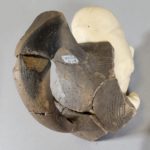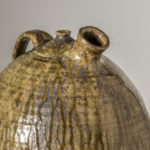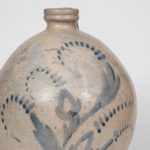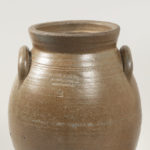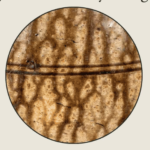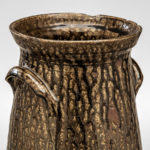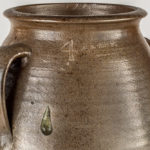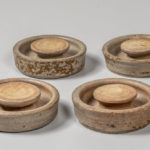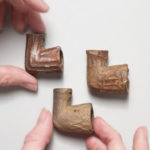Surface Level: A Look at Alkaline Glazes in Randolph County
The thick, syrupy rivers of green and brown glaze on these jars had humble beginnings: a heap of ash left from burning wood, sand from a riverbank, and clay dug from the earth. The potter mixed these together with water and carefully dipped each pot into the solution. The ash lowered the melting point of the sand. When the pot was blasted with temperatures up to 2,500 degrees Fahrenheit inside the kiln, the sand liquefied and spread across the surface, leaving glassy greenish brown trails.
There are only two places in the world where this type of glaze, called “alkaline” has been extensively used: East Asia and the American South. The potters of Randolph County, Alabama were closely linked with makers in Edgefield, South Carolina, the epicenter of America’s alkaline glaze tradition. Towards the center of the state, and especially in the mountains, another type of alkaline glaze was used. Derived from limestone, lime-based alkaline glazes tend to create a more uniform light green or tan surfaces.
| Churn
Mid-19th century Randolph County, Alabama Stoneware with ash-based alkaline glaze William C. and Susan S. Mariner Southern Ceramics Collection |
 |
 |
||
| Jar
1847 Possibly shop of James Pinkney Shepherd Randolph County, Alabama Stoneware with ash-based alkaline glaze William C. and Susan S. Mariner Southern Ceramics Collection |
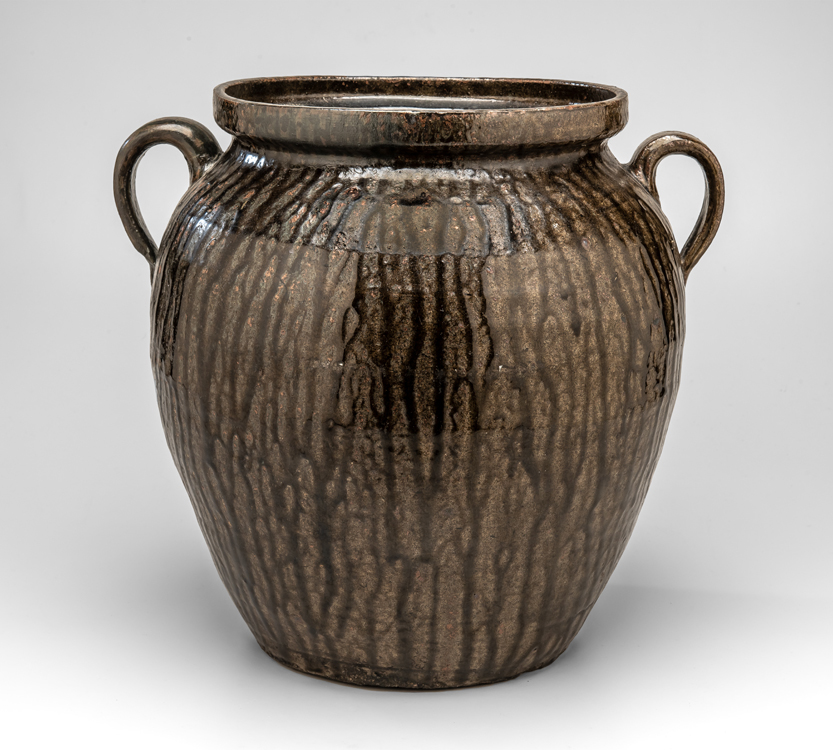 |
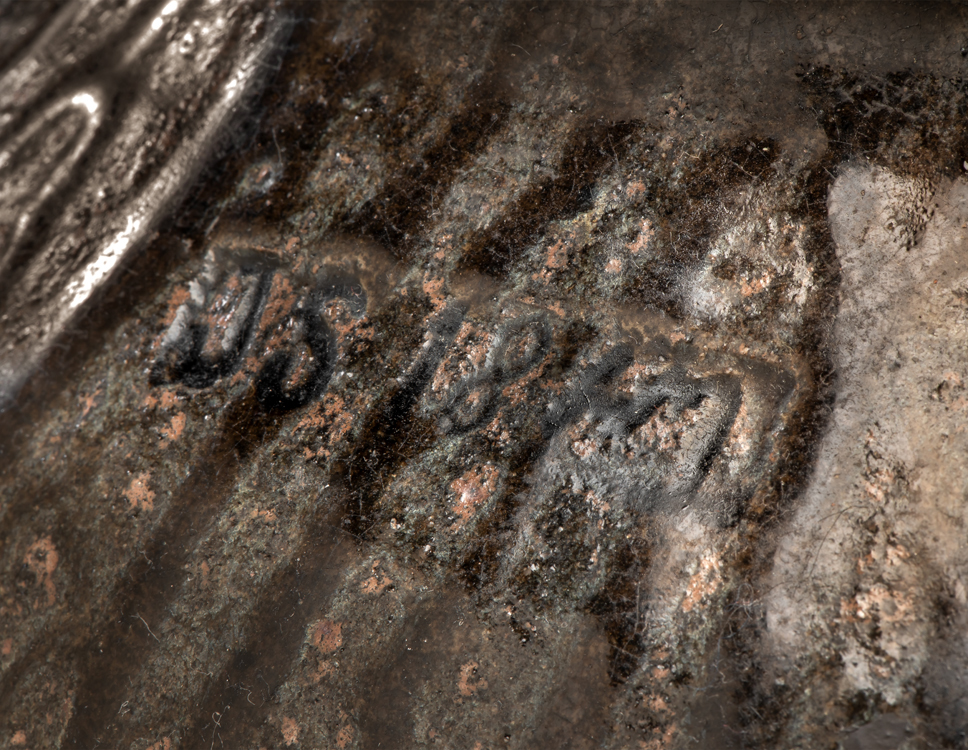 |

